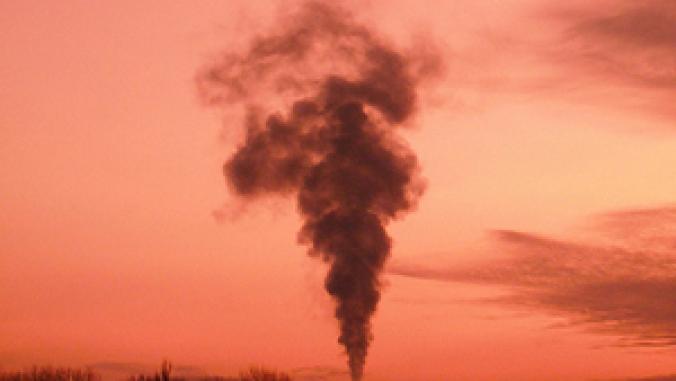Coal-Fired Power Plants and the "China Test"
The world cannot meaningfully address climate change without developing reducing emissions at existing coal-fired power plants, according to a recent MIT study. Any strategy must pass the "China Test" -- cheap enough to be implemented by developing countries.

The world cannot meaningfully address climate change without developing affordable technologies that can reduce greenhouse emissions at existing coal-fired power plants, according to a recent study.
But the U.S. government isn’t moving quickly enough to bring feasible retrofit technologies to scale, or investing enough in research and development programs to develop medium- and long-term solutions, a report from the Massachusetts Institute of Technology found. Passing the “China Test,” the report said, is critical for any R&D program during the next decade: Mitigation strategies must be cheap enough to be accessible to developing countries.
China’s coal plant fleet is now about the size of the U.S. fleet -- and growing. China is opposed to emissions reduction targets, arguing developed countries should shoulder more responsibility for current emissions levels.
"China's logic is understandable -- most of the CO2 in the atmosphere did come from the developed world, and we do emit more per capita than they do," J. Wayne Leonard, CEO of utility Entergy, which commissioned the report, said in a statement. “At the same time, many in this country ask why we should go to all this effort and spend all this money on capping our emissions before China agrees to act.”
Among the findings:
The report is based on a March symposium that brought together more than 50 stakeholders representing utilities, industry, government, public interest and academia. The report, along with supplemental materials, can be downloaded at the MIT Energy Initiative website.
But the U.S. government isn’t moving quickly enough to bring feasible retrofit technologies to scale, or investing enough in research and development programs to develop medium- and long-term solutions, a report from the Massachusetts Institute of Technology found. Passing the “China Test,” the report said, is critical for any R&D program during the next decade: Mitigation strategies must be cheap enough to be accessible to developing countries.
China’s coal plant fleet is now about the size of the U.S. fleet -- and growing. China is opposed to emissions reduction targets, arguing developed countries should shoulder more responsibility for current emissions levels.
"China's logic is understandable -- most of the CO2 in the atmosphere did come from the developed world, and we do emit more per capita than they do," J. Wayne Leonard, CEO of utility Entergy, which commissioned the report, said in a statement. “At the same time, many in this country ask why we should go to all this effort and spend all this money on capping our emissions before China agrees to act.”
Among the findings:
• A carbon price signal that will emerge from a greenhouse gas cap-and-trade program is vital to drive decision-making on mitigation technologies.
• The U.S. must spend about $1 billion annually over the next decade on a balanced R&D effort that includes simulation and analysis, pilot plants, large-scale demonstrations and exploratory research.
• Post-combustion carbon dioxide capture, along with large-scale sequestration, is the “most direct path” to avoiding nearly all CO2 emissions. Other pathways to reduce emissions from existing coal plants include efficiency retrofits, biomass co-firing, major rebuilds and repowering with either biomass or natural gas.
The report is based on a March symposium that brought together more than 50 stakeholders representing utilities, industry, government, public interest and academia. The report, along with supplemental materials, can be downloaded at the MIT Energy Initiative website.




